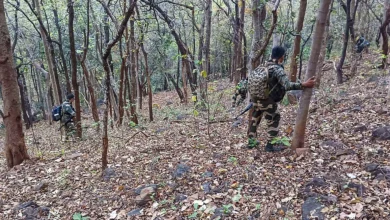J&K sees 99% decline in stone pelting, 60% reduction in casualties among forces, zero explosives seized, data reveals
According to a report, the data showcases a 71 per cent increase in the apprehension of terrorists and their overground workers (OGWs) between August 5, 2019, and June 16, 2023.

Stone-pelting incidents in Jammu and Kashmir have seen a massive drop since 2019. According to data obtained by News 18, stone-pelting events have decreased by 99% in Jammu and Kashmir since the first half of 2020. Approximately 324 instances of stone-pelting were reported by local authorities in the first half of 2020. Next year, there were 179 fewer of these instances. Similar to 2021, 50 and 3 incidents total were reported over the same period in 2022 and 2023, respectively, according to the data.
Additionally, the G20 summit was conducted in Srinagar this year. The Union Territory’s success may be attributed to Home Minister Amit Shah’s leadership, who routinely assesses security and development concerns.

Other Developments
According to the report, the amount of explosives and grenades recovered from Jammu and Kashmir has decreased. Security personnel seized over 68 Kilos of explosives in 2021. The number is zero this year.
The number of recovered grenades decreased from 266 in 2020 to 83 in 2023. Data showed that from 2020 to the first part of 2023, 728 grenades and 102.75 kg of explosives were seized from Jammu and Kashmir.
In another positive development, the number of security personnel martyred in J&K has seen a massive dip since 2020, with the figure coming down from 32 to 11.
Negatives
According to a report, the data showcases a 71 per cent increase in the apprehension of terrorists and their overground workers (OGWs) between August 5, 2019, and June 16, 2023.
IED-related deaths increased alarmingly by 73 per cent between 2015 and 2019 and 2019 to 2023, demonstrating the escalation of these deadly attacks. IEDs (improvised explosive devices) remain a serious problem as the recoveries have shown a rise. In contrast to 2020, which saw no IED recoveries,2021 saw the recovery of five IEDs. This number increased to 17 in 2022 and to 15 in 2023.
The government has established a well-coordinated, multi-pronged approach to combat cross-border infiltration, the ministry had recently stated in Parliament. This entails the tactical deployment of forces at the international border (IB) and the line of control (LoC), the use of technology such as surveillance cameras, night vision cameras, heat sensing devices, etc., a multi-tiered deployment along the IB and the LoC, border fencing, the deployment of intelligence personnel to collect advance and target-oriented inputs on infiltration, ambushes, and foot patrol by the army and border security force (BSF), and the establishment of border police posts for generating local intelligence and taking pro-active action against infiltrators.
What are IEDs?
A “homemade” bomb or other destructive device is used in an “improvised explosive device” (IED) attack to kill, disable, harass, or divert targets.
IEDs are used by criminals, vandals, terrorists, suicide bombers, and insurgents. IEDs can take many different shapes because they are improvised, from simple pipe bombs to complex weapons that can inflict significant harm and casualties.
IEDs may be transported or dropped by a vehicle, carried, positioned, or thrown by a person, dropped inside of a box or hidden along a rod. The term IED came into common usage during the Iraq War that began in 2003.
Please, also have a look into : Defence Minister Rajnath Singh inaugurates 90 major infrastructure projects in J&K today



